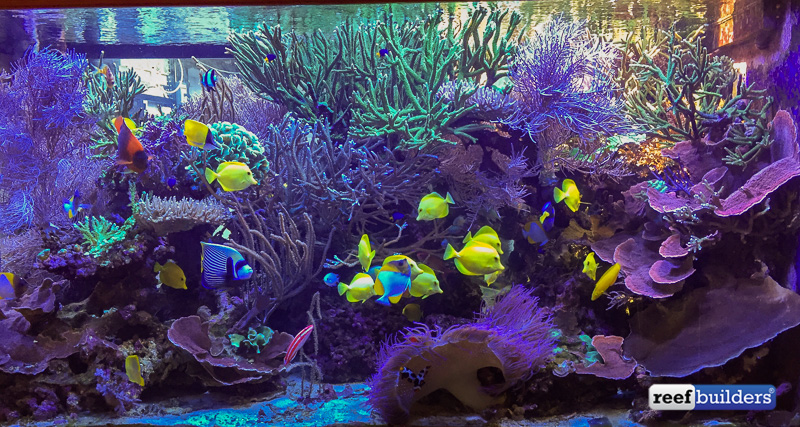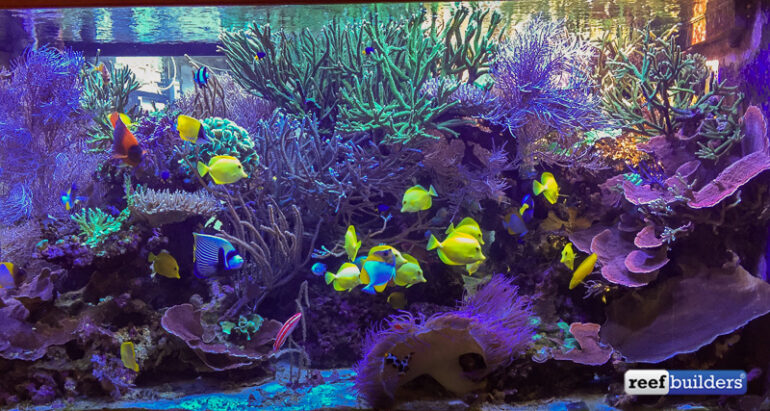A couple of months ago I wrote a piece asking where all the big corals went. Well on my recent speaking trip to England, I found them. In the tank of my friend Martin Lakin I was amazed to see some of the largest and healthiest colonies of Acropora and other inverts that I have ever seen in either a private home or public aquarium.
I know that I have said numerous times that a big head of coral, even if it is brown, is more appealing to me than some tiny frag of a named coral. So when Martin took me to his home, while apologizing the whole time for his brown corals, I was prepared to be underwhelmed.
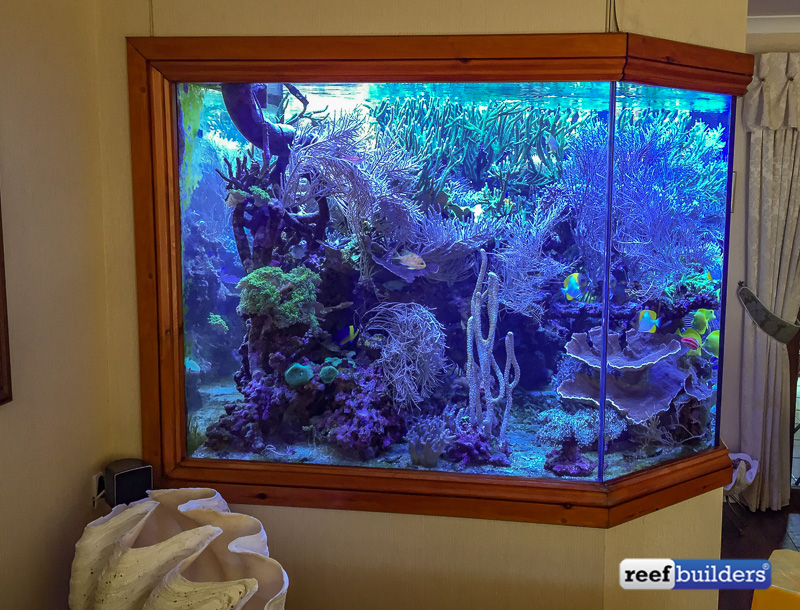
He also let me know that his tank was less than 4 years old, so in my head I prepared myself for the worst. So when we walked into his home and entered the lounge there are no words to describe how completely overwhelmed I was. In fact, it left me speechless, and for those of you that know me, you know how difficult getting me not to talk is.
What I felt from the moment I saw his tank was that it was the closest I have felt to being on a small section of a reef itself. Unlike many of our tanks, which contains dozens if not hundreds of small and different corals this tank transported me to the reef as it contained only a dew different species of coral. But this simplicity was perfect as the corals and fish themselves were all as big, healthy and robust as any I had seen on a reef or anywhere else.
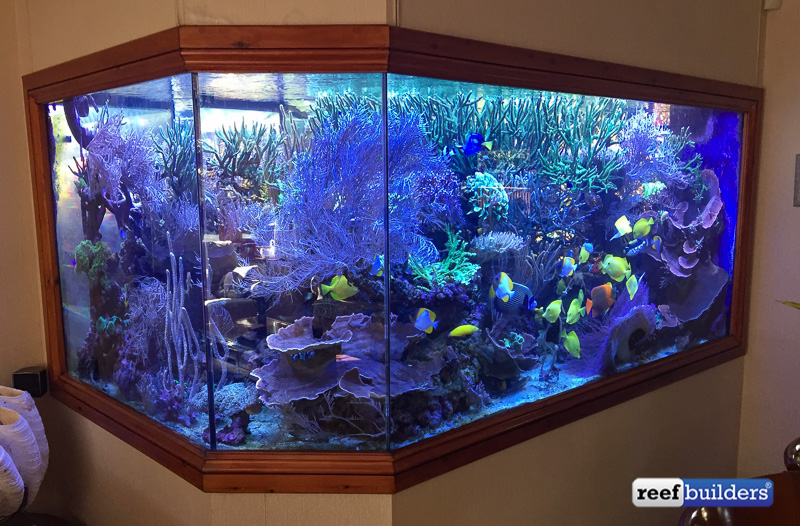
The second thing that conveyed this was the size of the tank itself, well in excess of 1200 gallons. And the third reason I felt I was on a reef is that all of the fish were big, fat and happy and behaved in a fashion similar to fish I have observed on a reef. I know I have included pictures with this as I always do, to provide an idea about what I am talking about, but truth be told no picture can convey how impressive the health and growth of these corals was.
First and foremost is the stand of the green Bali slimmer that resembles a thicket of bamboo and whose branches fill the upper third of the tank almost completely with some well in excess of over 2 feet tall. Where these corals aren’t growing Martin has propagated photosynthetic gorgonian colonies, that sway constantly in the ever changing current throughout the tank. In places where these corals weren’t present, Martin placed several other species of corals and let them grow to their full splendor as well.
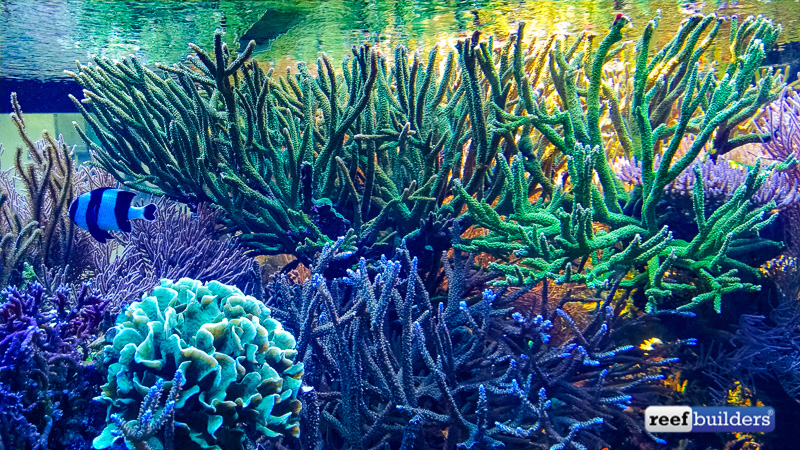
As I mentioned, unlike my tank and many others of us, Martin does not have a “collection” of every coral under the sun, and he is not constantly adding or removing corals as “we” often do. But rather, his tank actually looks like a section of a real reef in that like a reef a few corals predominate, and were allowed to grow to their full splendor, and where they aren’t present a the fish constantly swim to fill the space.
As soon as you see this tank you know that Martin is passionate about the hobby, or as he says the hobby is in his blood. To understand how serious he is, you have to realize and see what it took to complete this undertaking. Martin has been keeping a marine tank for over 37 years, so it has indeed been in his blood for most of his life. But it was only a little over four years ago that he and his wife decided to redo their home in a major way and take his passion as far as he could.
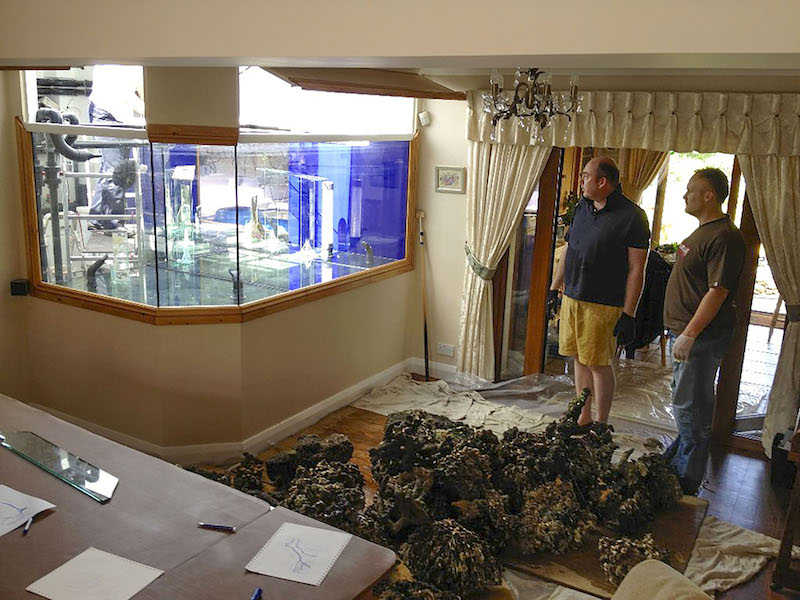
In doing so he spent a year planning this project as he had to not only simply plan for putting in a tank, but he also had to literally re-engineer his entire home and disrupt his family’s life while this project was going on. In fact, this project was such a big undertaking that many of the country’s newspapers and several other news outlets all had stories about it, and as so often happens in this hobby tried to portray it in a negative fashion. Fortunately, Martin has a good sense of humor and let the press’ attempt at stirring the pot go unanswered.
At this point you may be asking yourself since this just sounds like another big tank, what makes it so different? First besides it being over 1200 gallons in size, it is somewhat unique in that it is lit not only by metal halides lamps, but also by a skylight directly above the tank.
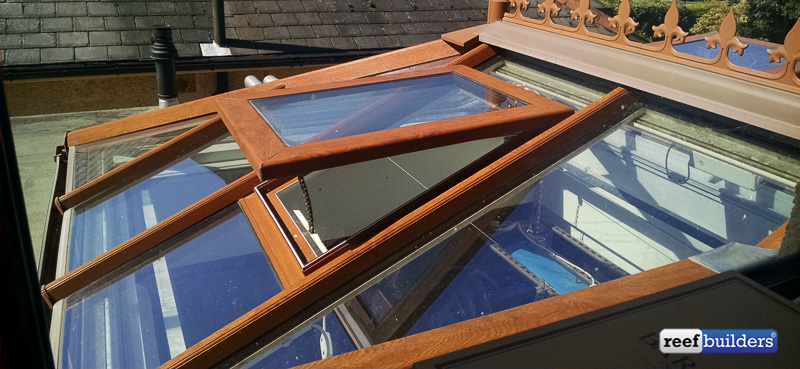
As a result, it gets significantly stronger light than just about any other home aquarium I have seen. And the skylights are so big that it allows for the sun to pass over the tank in such a manner that it mimics what happens on a natural reef. As a result unlike many of our tanks using artificial light, despite their large size none of the corals in his tank showed the bleaching at the bottom like our corals do.
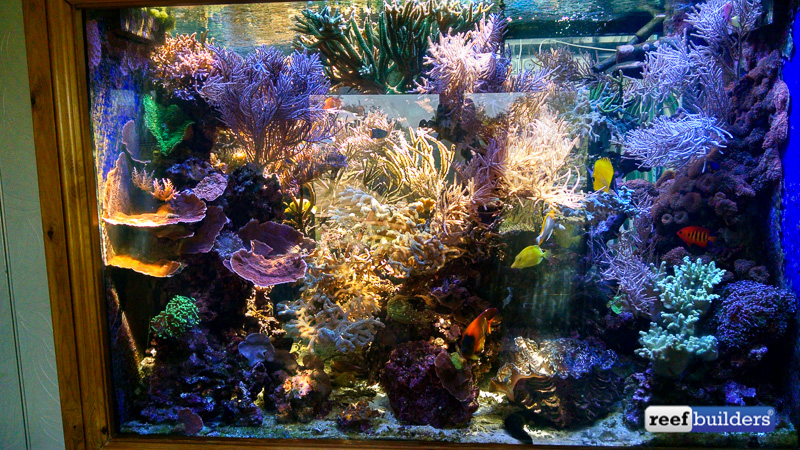
This sunlight though, as I have found with my own tank, may account for why most of the Acroporas are brown. But since Martin acclimated them slowly to this strong light source they have been able to utilize it and grow faster and bigger than just about any corals I have seen.
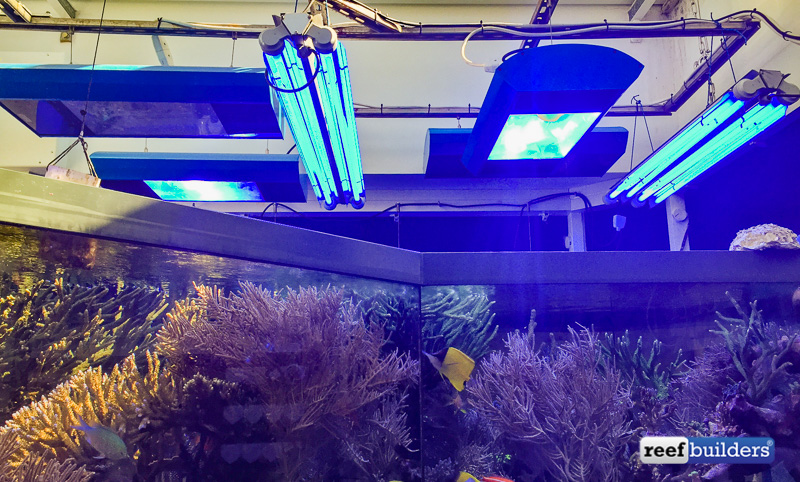
Because the tank was designed to utilize sunlight so well, it only uses 6 X 400-watt metal halide fixtures, which is amazing considering how big this tank is. Obviously this is more than adequate light as shown by the health and size of the corals that have grown so robustly in such a relatively short time.
Some of these staghorn colonies are over 3 feet across in size and at least 2 feet in height and all were started as frags just more than 3 years ago. And their growth is so great that Martin has to constantly frag them, and his frags are huge, lest they become a staghorn forest.
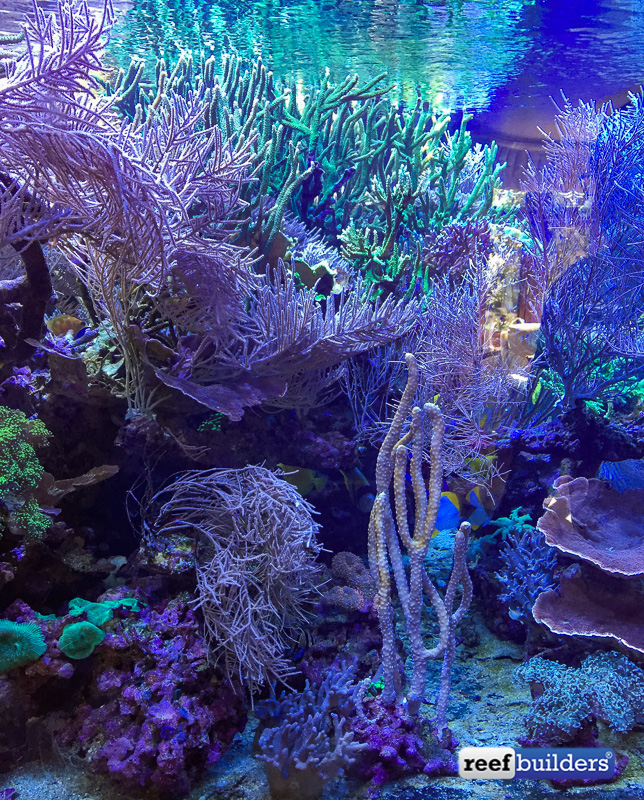
Similarly, the 20 plus large 2 foot plus in height gorgonians, also all started from a single gorgonian that Martin fragged over the past three plus years and has used each new propagated one to also fill in any empty spaces within the tank. So while these corals are all rather new, their size and health makes them impressive, Martin also has a huge long tentacle anemone housing a pair of Percula clowns, that he has now kept for over 15 years, demonstrating his success is not just something that has occurred recently.
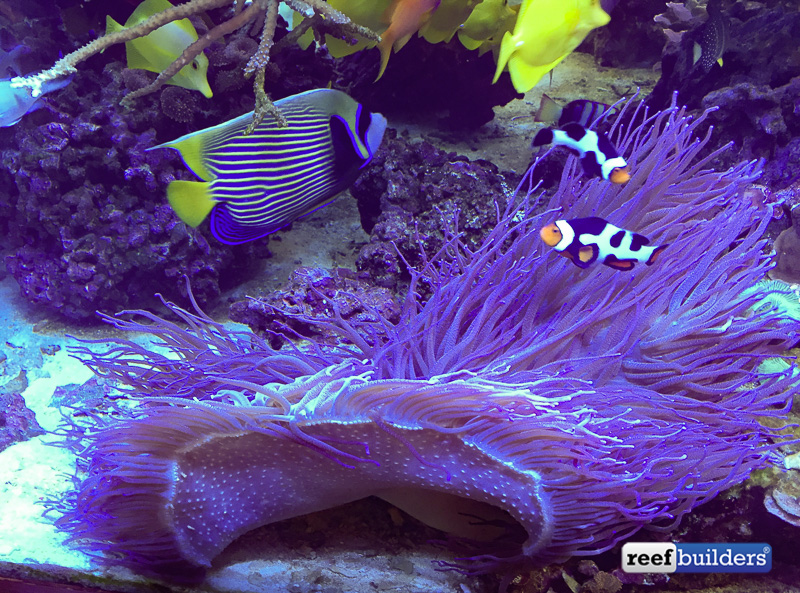
In addition to it receiving stronger light than most tanks, it also is unique in that it can be viewed from three different sides. And by viewed, I do not mean that there are small little spots in the walls to look through. Instead Martin designed it so that there is not only an enormous viewing area in the front lounge and dining area of the house, but there is also a large viewing area in the play area as well as an even larger viewing area in the tank’s equipment room.
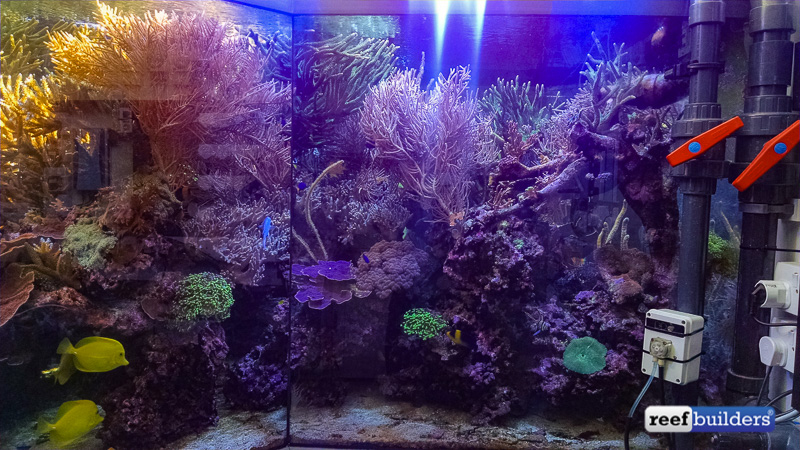
As a result, there are more expansive ways to view this tank than I have seen for just about any other tank I’ve seen. Because of this when Martin constructed the base reef of live rock in the tank he did so in such a manner that there are seemingly infinite caves, overhangs, canyons and crevices within the reef through which the fish can seemingly swim without the constraints that occur in most of our tanks.
There is virtually no rock or other structures touching the wall of the tank, so it is a completely open structure. And while he put in over half a ton of live rock, the base reef structure seems to fill a smaller portion of the tank than it should. This is probably due to corals being so impressive and having grown to cover much of the rock, that one hardly notices the rock at all.

The structure is such and the viewing areas are so well designed that unlike most tanks of this size, there is virtually nowhere a fish could hide from view. Unlike the fruit stand look that is thought of as aquascaping in many tanks, Martin took the time to plan and then place the rock so that it is both appealing to look at and provides such a natural environment that the fish exhibit no repetitive behaviors or hiding that occurs in many of our tanks. And while this may also be the case in many of our tanks, but in this tank it is impressive due to how many fish are in the tank and how large they are. .
While the planning for this tank and its construction took over a year to complete, Martin also planned for the installation of equipment such that there was redundancy in the equipment, so that if a piece failed, it would not cause a catastrophe. So rather than using one gigantic skimmer it has two large skimmers as well as two sumps instead of one.
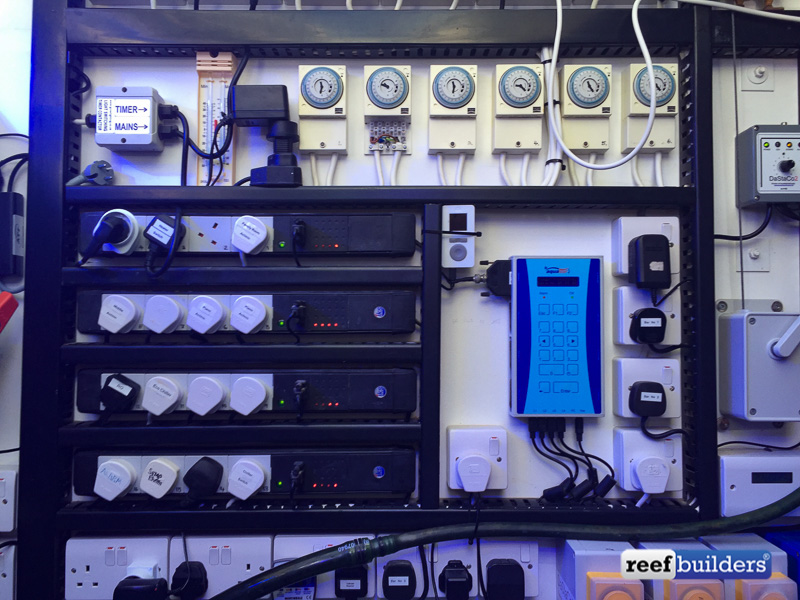
Flow is provided by two return pumps rather than one, and two closed loops instead of one. This was done so that if one device ever fails the remaining one is of adequate size that it will keep the tank functioning until a failing piece of equipment can be replaced.
But even that wasn’t enough as Martin has a back-up pump for every pump to further protect the tank, just in case. Since the skylight acts as a greenhouse and thus could potentially overheat the tank, Martin not only has an oversized chiller mounted on the roof to provide chilling when needed, but he also has automated the glass in the skylight such that if it gets too warm, it automatically opens to release the excess heat.
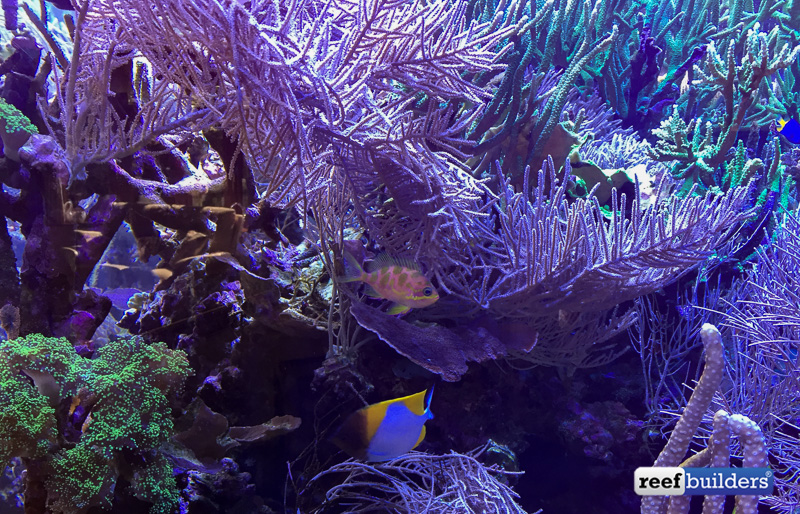
Since the corals have grown so robustly I was curious as to how calcium and carbonates are supplied to meet this demand. In this regard martin uses a state of the art calcium reactor by Dastaco, that supplies this compounds in what was to me a unique fashion. Martin said that once he tuned in the reactor as demand increases all he has to do is adjust a knob and he can increase the alkalinity level to whatever he wants.
I will discuss this piece of equipment more in depth in future articles, as it was interesting to watch it in action. While all of this is very impressive, Martin even went further to reduce the likelihood of a major problem in that he installed a kind of drawer around the pumps so that if one should fail and start to leak, rather than leaking all of this water onto the floor and thus out of the tank, the drawer would act to direct this water back into the sump, thus avoiding any chance of a failed pump causing a major drop in salinity.
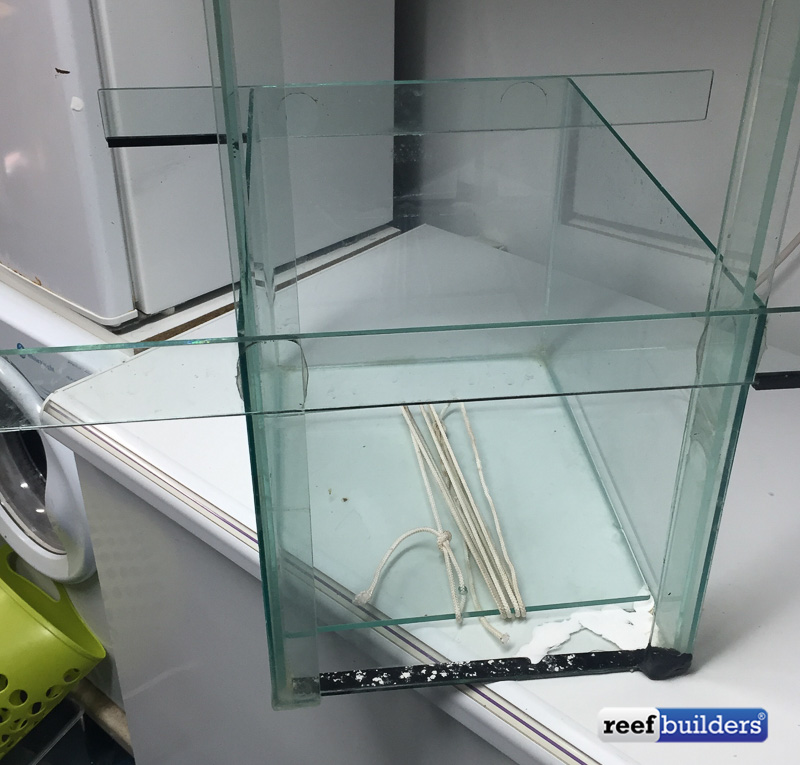
As well thought out as all of this was, one of the most interesting things that he showed me , and what convinced me that he must not of slept for the year he was doing his planning and construction, was the giant fish trap he constructed. This trap is almost 2 feet long and 16” square and made completely out of glass.
Due to its size and construction and that it can be hung at the top of the tank where the fish are normally fed, it is almost invisible to them, and thus when he needs to remove a fish for whatever reason, they readily go into the trap and are easily removed. He has used this trap to remove sick fish as well as fish that were being too aggressive or that were being harassed and he said it has never failed.
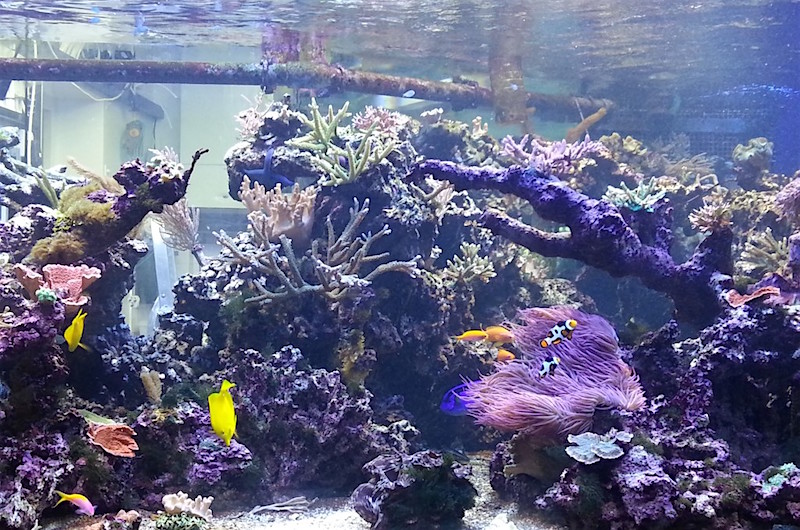
While the aquascaping, technology, planning and tremendous growth of the corals is impressive, especially considering that all of the corals have been grown from fragments and none of the colonies are over 4 years old, the tank further produces a sense of awe when you just focus on the fish. As a fellow hobbyist after my own heart, Martin has packed this tank will well over 100 fish.
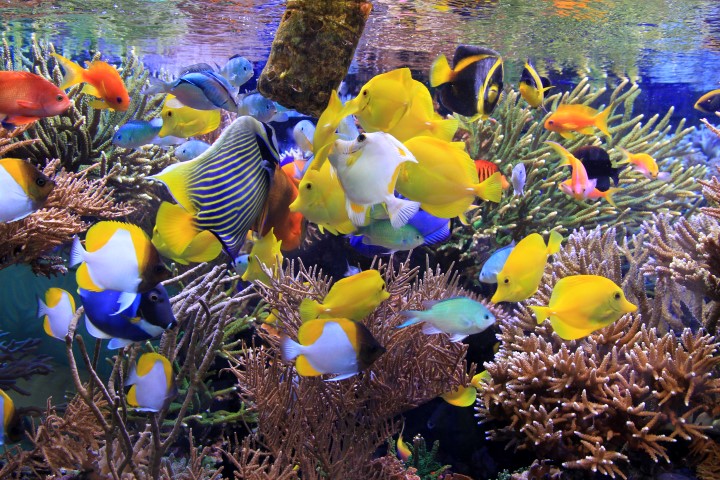
And not just the usual small docile fish that we typically keep in our reefs tanks, and while there are schools of yellow tangs and green chromis that is about it for the common. Instead there is a school of Pyramid butterflies, a pair of Regal Angelfish, a trio of bicolor angelfish, a large Harlequin Tuskfish, a large Clown Triggerfish, a Clarion Angelfish, and a perfectly colored adult Emperor Angelfish that does justice to its name as well as a sub-adult that Martin is trying to pair up with it.
But Martin did not stop there as there are also 3 butterflyfish including a long and copperband, a pair of deepwater fuscus anthias, and lastly my favorite fish a true peppermint hogfish.
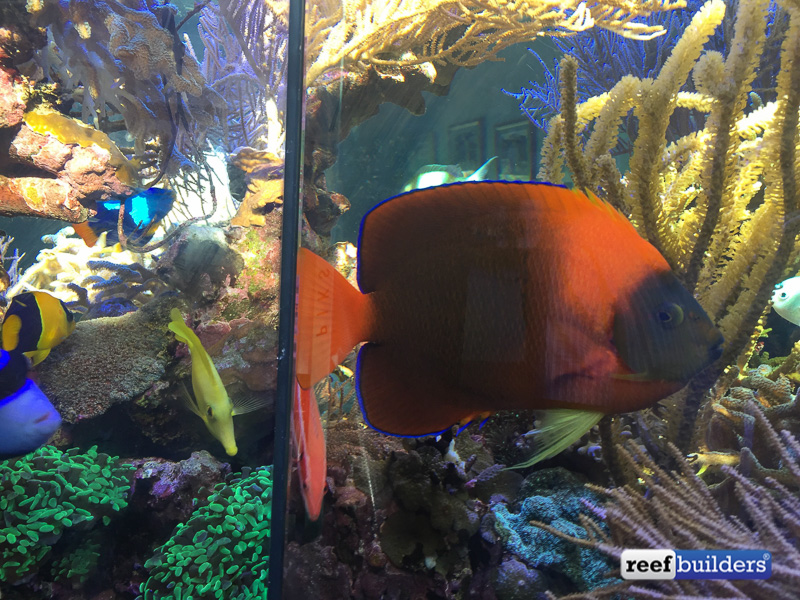
There are so many unique features to this tank that it is difficult to find a place to stop writing about it. While some may not be impressed as it does not contain the typical brightly colored named corals that we have come to view as the hallmark of a successful tank, no one can dispute that the growth and health of the fish and corals in this tank in such a relatively short time is impressive and to me beyond compare.
My only regrets are that I did not take more pictures (and I know, was a better photographer) and that Martin can’t add the spectacular mis-barred Regal angel and Blue Face angel that he has sitting in the sumps to the main tank due to the fish he has being so territorial now, that he has found it difficult to add any new fish.
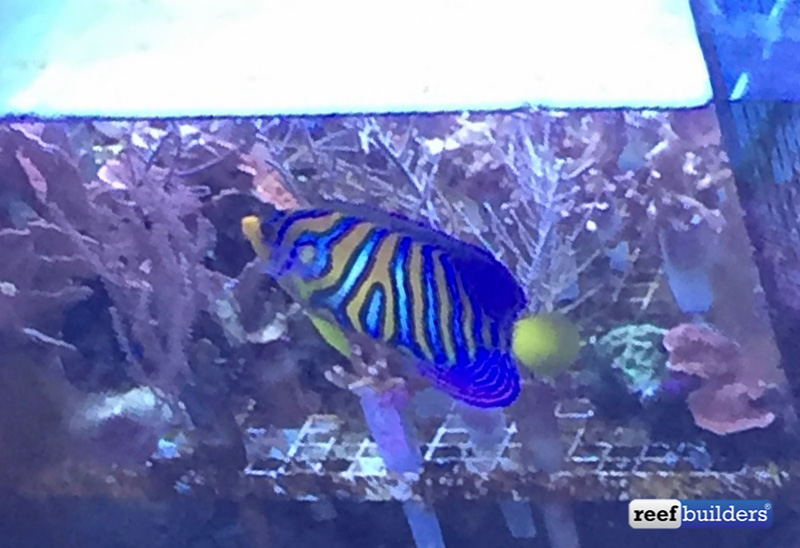
One of the benefits of traveling to give talks is that I get to see tanks like this that inspire me to do better. In the case of Martin’s tank it also makes me open to the idea that a tank with mostly giant “brown” corals can be just as if not more impressive than one housing tiny colonies of small constantly fragged corals.
My only concern is that if he continues to allow the corals to grow to the degree he already has in the very near future his home will resemble that of Jack in the Beanstalk after the bean stalk sprouted through the home.
